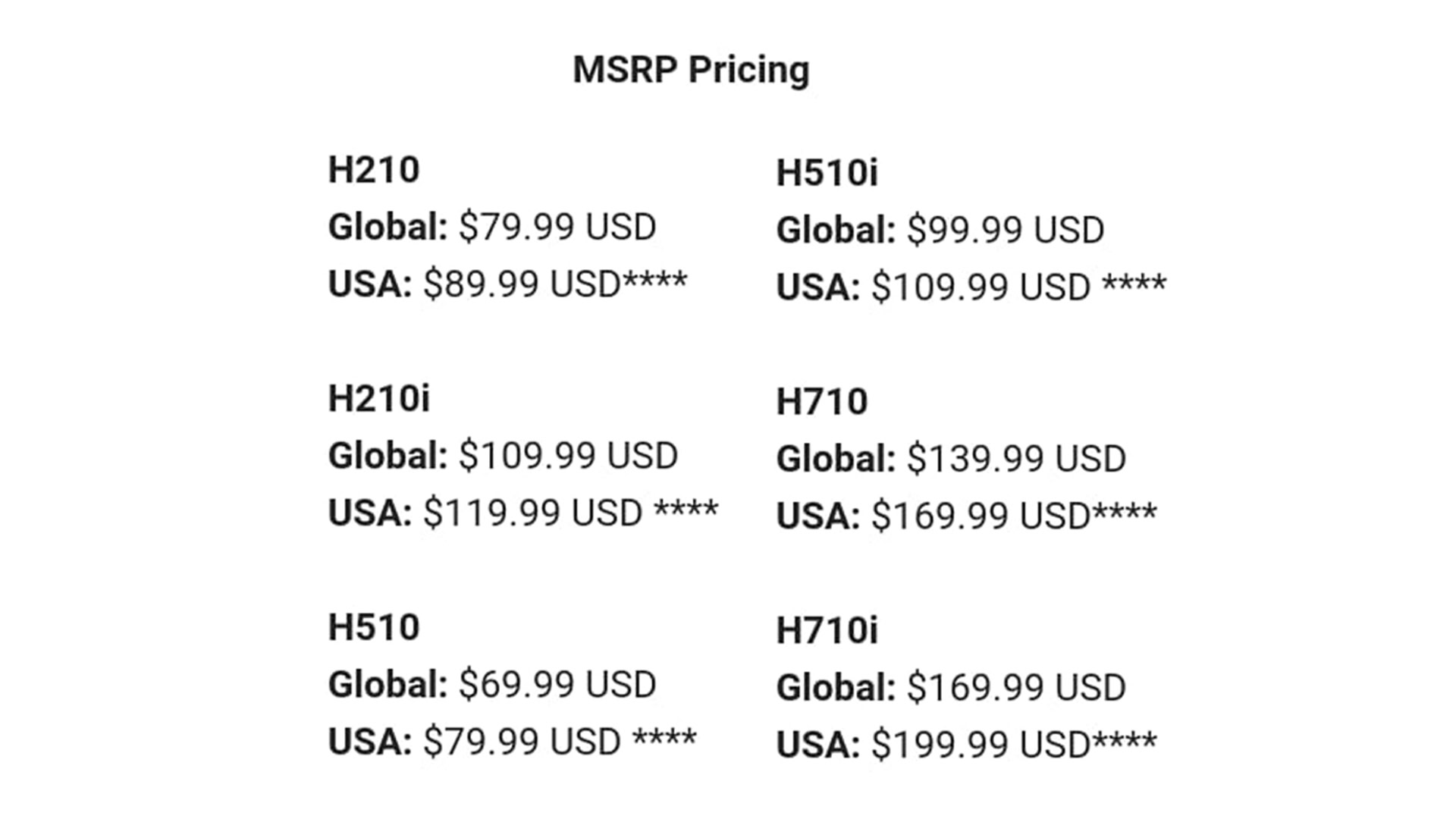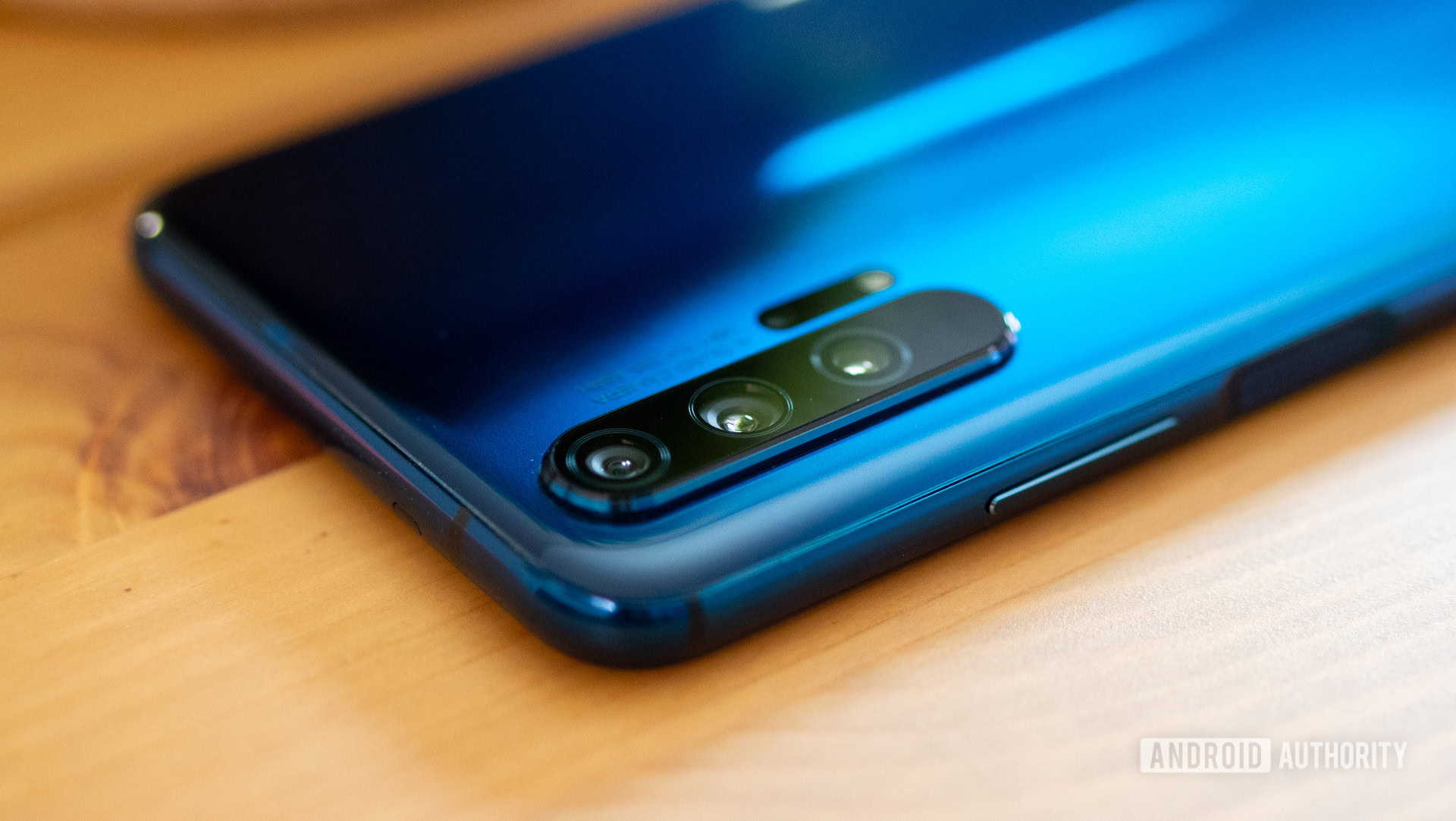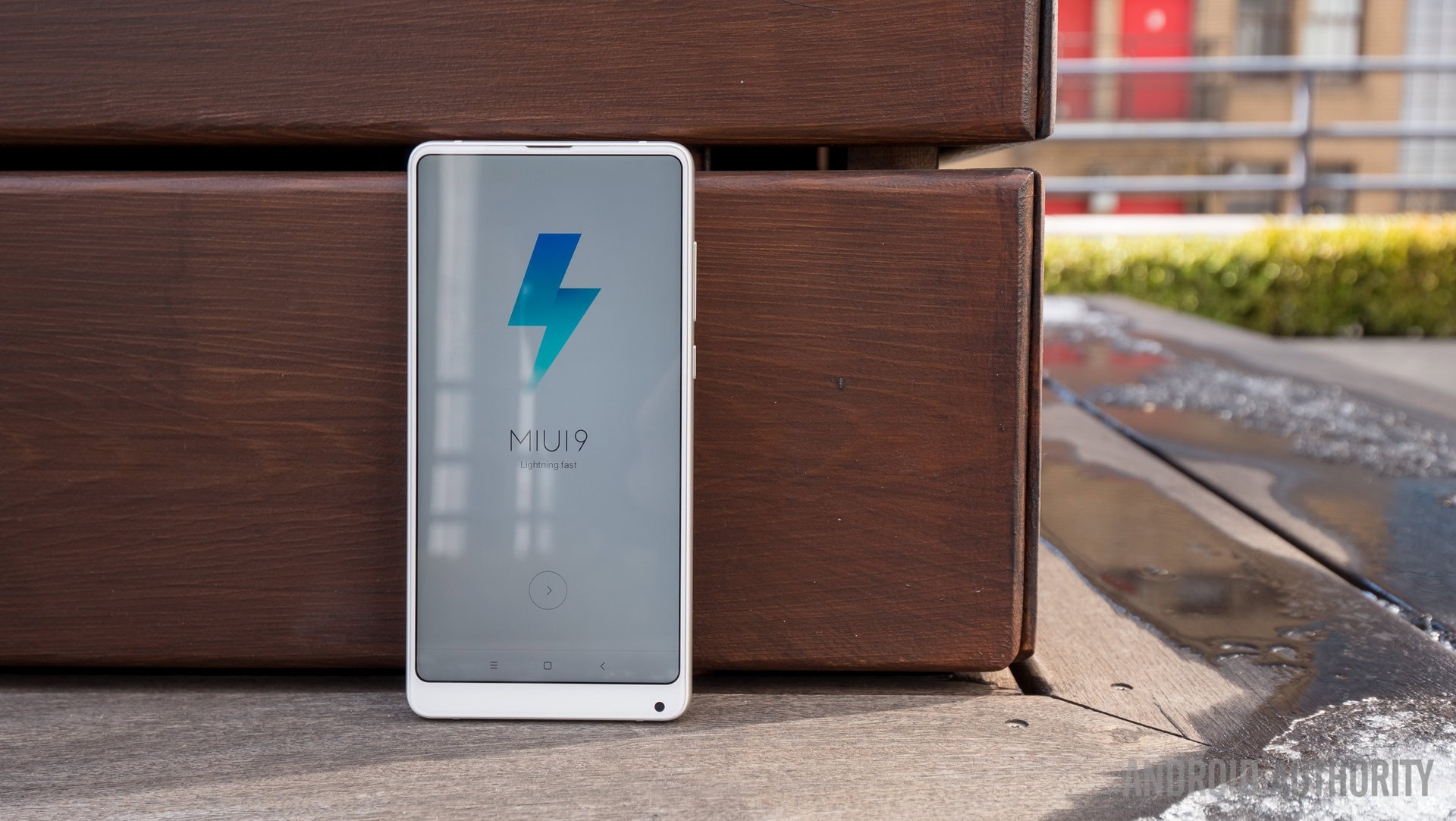Affiliate links on Android Authority may earn us a commission. Learn more.
The U.S. phone market is about to get even more expensive (Continuously Updated)
Update: August 13, 2019 (2:30 p.m. ET): Today, the U.S. Federal Trade Representative announced the official set of list-4 tariffs. Unlike the other lists, list-4 will be broken up into two separate lists, each with their own set of goods and dates in which they will take effect. List 4a, taking effect September 1, 2019 includes a large number of consumable goods like meats and cheese but also includes other cooking supplies like knives. List 4b is less defined by category and covers everything from sportswear to bed sheets. Most notably though, list 4b covers smartphones, laptops, and game consoles. This means smartphones imported into the U.S. will be safe from tariffs until at least December 15, 2019. U.S. President Donald Trump cited the Christmas holiday season as the primary reason for the December delay.
The U.S. Trade Representative says it has removed some items from list 4 altogether, citing health and national security concerns. Considering we never knew what was on the initial set of list-4 tariffs, this doesn’t change much. We’ll update this article if we have any new information.
Update: August 1, 2019 (4:51 p.m. ET): Today, President Donald Trump announced he will impose a 10% tariff on an additional $300 billion worth of all list-4 goods. This most likely means all assembled electronics will be included, though the U.S. Trade Representative has not released the finalized list. It’s possible the list was revised to remove certain products following the public hearings last month. The tariff is scheduled to take effect on September 1, 2019. We’ll update this article when we learn more.
In addition, Trump says he is also planning to reverse the ban of sales between HUAWEI and United States companies. While HUAWEI has yet to be removed from the Entity List, Trump says the ban was unfair to U.S. companies who provided HUAWEI with components. In the next few weeks, the U.S. Commerce Department will determine whether or not to remove HUAWEI from the list.
Update: June 25, 2019 (3:00PM PT): This week, Hon Hai Technology Group (Foxconn) received approval to break ground at its new facility in Wisconsin. If this new factory gets built, it could shift some of the company’s production out of China and into the United States, avoiding tariffs for many of the products Hon Hai Technology Group (Foxconn) manufactures. Though Hon Hai Technology Group (Foxconn) stated it is using the facility primarily for LCD production, this could shift work off of other sites in China and elsewhere.
This announcement comes the same week Hon Hai Technology Group (Foxconn) chairman Terry Gou stepped down to run for President of Taiwan. While the move seems a bit strange, its clear Gou is interested in reducing Hon Hai Technology Group (Foxconn)’s reliance on China. Gou has already stated he is moving part of the company’s manufacturing to Taiwan, so opening an additional facility in Wisconsin should help the company distance itself from the country.
Original article: June 18, 2018: Original post is here:
The last week of May, I attended Computex in Taipei, Taiwan. The event showcases the newest innovations in the computer industry, highlighting thousands of new products set to launch later in the year. We saw new technology from Qualcomm, Dell, ASUS, AMD, and Intel, with hundreds of other companies set to launch new and innovative products in the coming months.
Nearly all these companies announced release dates for their products. What many of them didn’t announce is pricing.
While in Taipei, I mentioned this oddity over dinner with Eber and Dmitry, video producers at the Hardware Canucks YouTube channel. When I brought it up, Eber was quick to inform me that the PC chassis manufacturer NZXT did release pricing for its new products announced at the show, but that United States pricing is $10 to $30 more expensive than the global pricing. This is due to the ongoing trade war between the U.S. and China, which brought tariffs of up to 25% on imports of certain materials and products.

NZXT had to increase the price of its products due to a U.S. tariff on Chinese steel and aluminum imports. But that left me wondering why so many other companies had refrained from disclosing pricing at Computex.
There are a number of likely answers and they are all very complicated, but a plausible one is a new set of tariffs on assembled electronics being imported to the U.S. from China. These new tariffs were announced on May 14, before Computex 2019 began, and could go into effect as soon as July 2nd.
In this article, I will try to explain a brief timeline of these tariffs, as well as the impact they’re set to have on the smartphone industry and the broader electronics industry in general.
The U.S.-China trade war: A brief history
On March 23, 2018, the U.S. imposed a 25% tariff on nearly all steel and aluminum imports, stating that importing the metals created a threat to national security. This, in turn, forced U.S. importers of steel and aluminum to raise prices in order to compensate. It also caused a lot of tension between China and the U.S.
There’s been a lot of trade negotiations and various tariff measures put in place since then, and I’m not going to list them all here. If you want a detailed list, have a look at this timeline. The bulk of this story is based on six key dates:
- July 6, 2018: The U.S. implements a 25% tariff on 818 goods imported from China (List 1), including printed circuit boards (PCBs) and touchscreens used in smartphones and laptops.
- August 23, 2018: The U.S. and China implement new reciprocal tariffs at rates of 25%. The U.S.’ tariff list (List 2) includes, among others, semiconductors. China’s list more directly targets markets like coal and medical equipment.
- September 24, 2018: The U.S. and China implement new tariffs on one another. The new U.S. tariffs start at a rate of five to 10% (List 3).
- January 7, 2019: The U.S. and China agree to a temporary truce, that would end March 1, 2019, if the two countries could not come to an agreement to end the trade war (they couldn’t).
- May 10-13, 2019: The U.S. increases the tariff rate of List 3 products to 25%. Three days later, China increases tariffs on U.S. products by $60 billion, starting June 1, 2019.
- May 14, 2019: The U.S. issues a new proposed list of items hit with tariffs, with rates of up to 25%. This new list would go into effect on July 2, after a seven-day rebuttal period following a public hearing starting June 17.
Another key date that’s not ostensibly related to the trade war, but was likely influenced by it, is May 17. On this day, the U.S. added HUAWEI to its so-called “Entity List”, which blocks the company from doing business with U.S. companies. A litany of companies – including Google, Arm, Intel, and Microsoft – have since stopped working with HUAWEI, putting one of China’s largest and most powerful companies in a precarious position. For reference, HUAWEI is the second largest smartphone manufacturer in the world and was widely expected to grab first place from Samsung within the next two years.
The key thing to know about the latest list of tariffs, which could go into effect July 2nd, is that it includes fully assembled electronic products shipped to the U.S. from China, including smartphones and laptops. Previously, U.S. tariffs only affected electronic components, not finished products.

What do the latest tariffs mean for phone makers?
While some smartphone OEMs like Apple and Google are based outside of China, assembly is often done in China. For example, Apple products are assembled by Hon Hai Technology Group (Foxconn) in Shenzhen, and early reports from JP Morgan estimate that the company would need to increase the price of the iPhone XS from $999 up to $1,142 (about 14%) in order to offset a 25% tariff.
According to research firm Tech Insights, Apple makes a nearly 200% margin on devices like the iPhone XS Max, so it’s possible it could eat the cost to stay competitive. JP Morgan estimates Apple will see about a 4% earnings decrease if the company were to simply absorb the tariff costs.

But Apple’s fat margins are not representative of the smartphone industry as a whole. Many other manufacturers, and China-based OEMs in particular, tend to aim for high value at a low cost and have much smaller profit margins.
Companies like OnePlus and Xiaomi are great examples of OEMs that are likely to be affected by the new tariffs. OnePlus entered the U.S. carrier market just a year ago with the introduction of the OnePlus 6T, and the new OnePlus 7 Pro recently launched in the States to wide acclaim. While it’s possible the $130 price hike over the OnePlus 6T was in part made to prepare for situations like this, it’s highly unlikely OnePlus knew this particular tariff was coming.
I reached out to OnePlus to inquire about the effect the new tariffs will have on its devices, but a spokesperson told me the company could not provide comment.
Xiaomi’s situation is particularly interesting because it has publicly stated it will never make more than 5% profit on its hardware, after tax. The company does not yet sell smartphones in the United States (though it has stated it was hoping to do so in 2019), but select products like the Mi Electric Scooter and Mi Box S have become quite popular in the country. Xiaomi did not send me a response to questions about the tariffs before press time.

Other smartphone companies you may not expect to be impacted could also take a significant hit as a result of the changes. Like Apple, Google’s Pixel 3 is manufactured by Hon Hai Technology Group (Foxconn) in China, meaning it could be subjected to the new tariff as well. Nokia and Lenovo-owned Motorola are in the same boat. Even Samsung, a South Korean company, still maintains two active factories in China, though the company is now prioritizing factories in Vietnam and India due to a sales slump in the Chinese market.
More extreme options are possible
If manufacturers want to avoid the tariffs altogether, they will need to shift production out of China. That’s not exactly easy to do though, even for the richest companies. In 2018, President Trump tweeted that Apple should move its manufacturing to the U.S. to avoid potential tariffs, but Bank of America-Merrill Lynch financial analyst Wamsi Mohan suggested Apple would need to increase its prices by up to 20% to offset costs of manufacturing in the U.S.
Recently, Hon Hai Technology Group (Foxconn) Chairman Terry Gou revealed that the company is planning on moving some manufacturing lines from China to Taiwan, to avoid paying U.S. tariffs. This could take a significant amount of pressure off individual OEMs, but only solves as much of the problem as Hon Hai Technology Group (Foxconn) is willing to relocate. Plus, it’s unlikely Hon Hai Technology Group (Foxconn) – or any other contract manufacturer – could satisfy demand with non-Chinese facilities only. Setting up a large factory can take years, and in the meantime, the companies that are willing to pay the highest prices – read: Apple – will get priority access to the production capacity.
It should also be noted that in 2017 Hon Hai Technology Group (Foxconn) signed a deal to move some production to Wisconsin, but as of now, it has failed to actually build any factories there. Hon Hai Technology Group (Foxconn) has apparently fallen so far behind schedule that its deal with the state may be renegotiated.
What happens next?
President Trump has said he will approve the new list of tariffs immediately if Chinese President Xi Jinping does not attend the G20 summit in Japan. If the two leaders meet, it’s possible the new tariffs could be avoided. If not, we’ll have to see how companies react. Pricing of new and existing products could jump significantly, so be prepared for more expensive devices if you live in the United States.
This tariff doesn’t cover phones alone, but also laptops, tablets, and really any other electronics product. It’s likely the pricing of nearly all electronics will increase after this tariff goes into effect. Not many manufacturers have the nearly-200% margin Apple has, but it’s possible some of them will prefer to take a temporary margin cut, rather than lose ground to competition.
While many companies will be taking a pretty massive hit from these tariffs, there are some that will see benefits from it competitively. Companies like ASUS and LG, who manufacture devices in Taiwan and South Korea respectively, shouldn’t be hit with the tariff at all. If OnePlus and others are forced to increase prices while ASUS and LG can stay the same, we could see a shift in market leaders over time.
Smaller players will be hit the hardest
Interestingly, while I was writing this piece, Bloomberg reported that Google is planning on moving much of its hardware production out of China, instead preferring to manufacture in places like Taiwan and Malaysia. Google previously shifted much of its motherboard production to Taiwan. Other U.S-focused companies probably think along the same lines, and, if the trend continues, we could see much less production in China overall. The long term implications are unclear.
While these tariffs will most directly affect U.S. consumers, we’ll likely see a ripple effect throughout the world. Companies that keep their prices the same in the U.S. to stay competitive will likely try to make up for these losses in other ways. This could take the form of anything from increasing in the price of subscription services to small price hikes around the globe.
We’ve still got a few days for all this to backtrack, but we’ll be monitoring the situation closely, so check back often to see the latest updates.